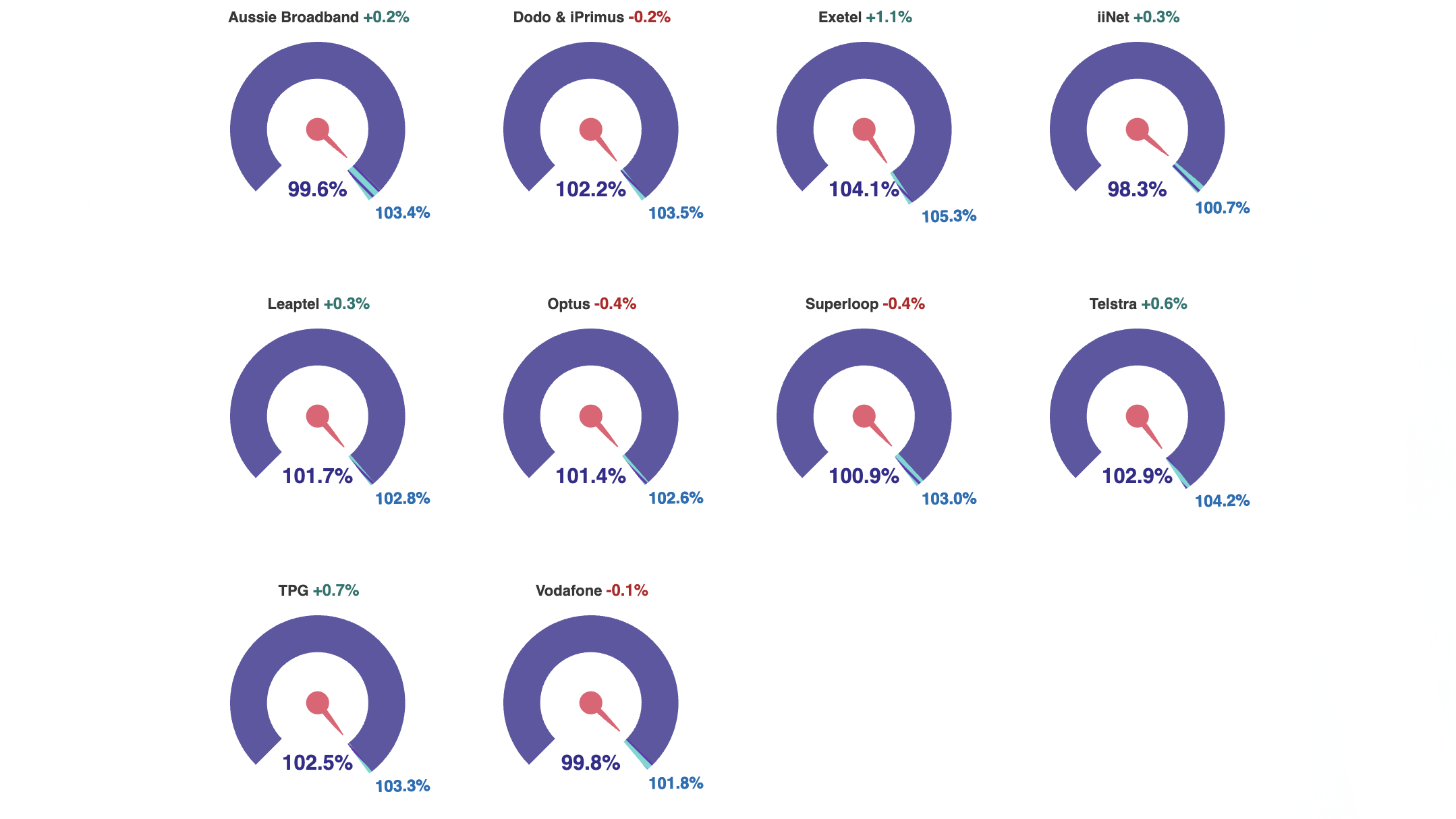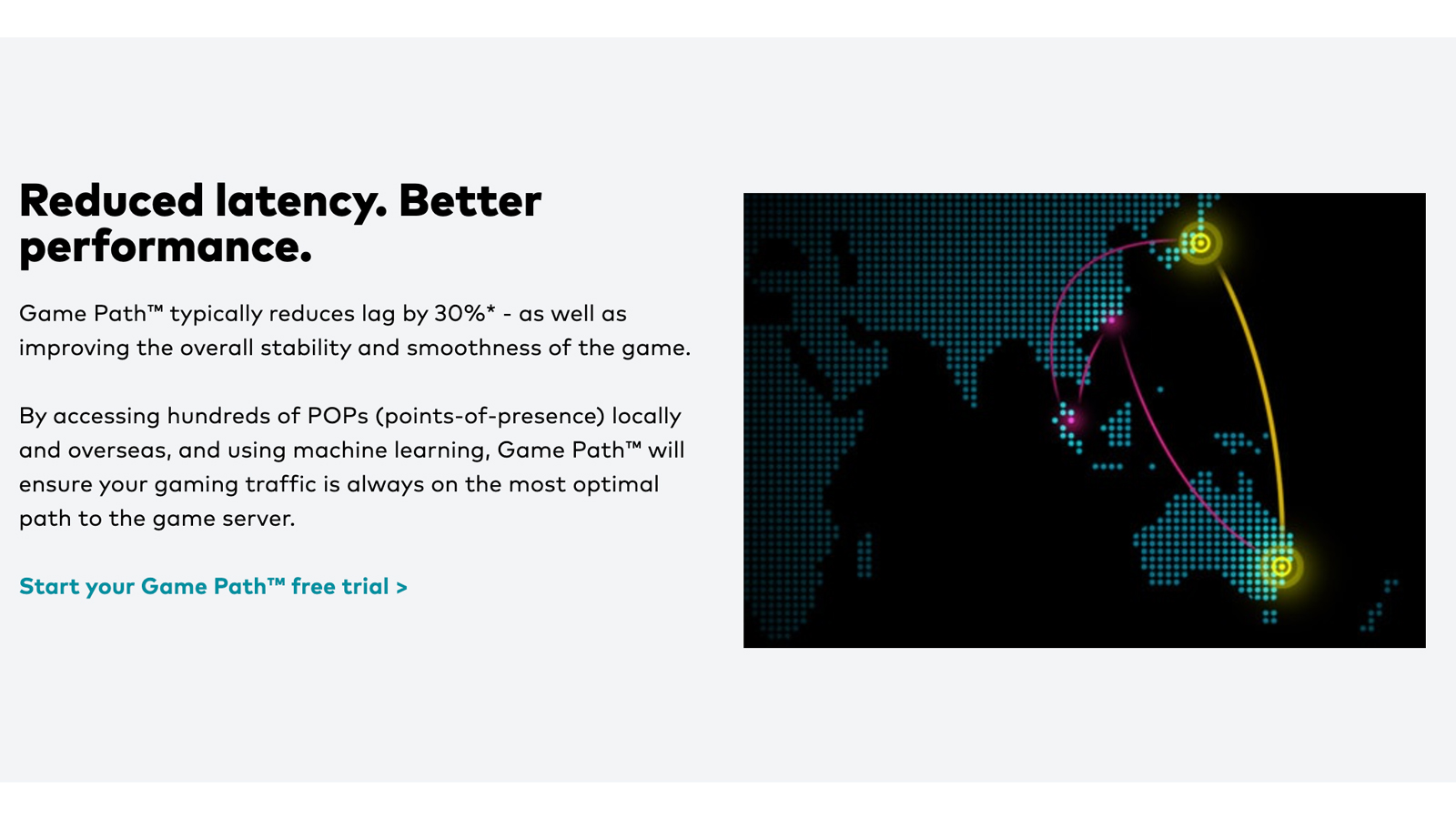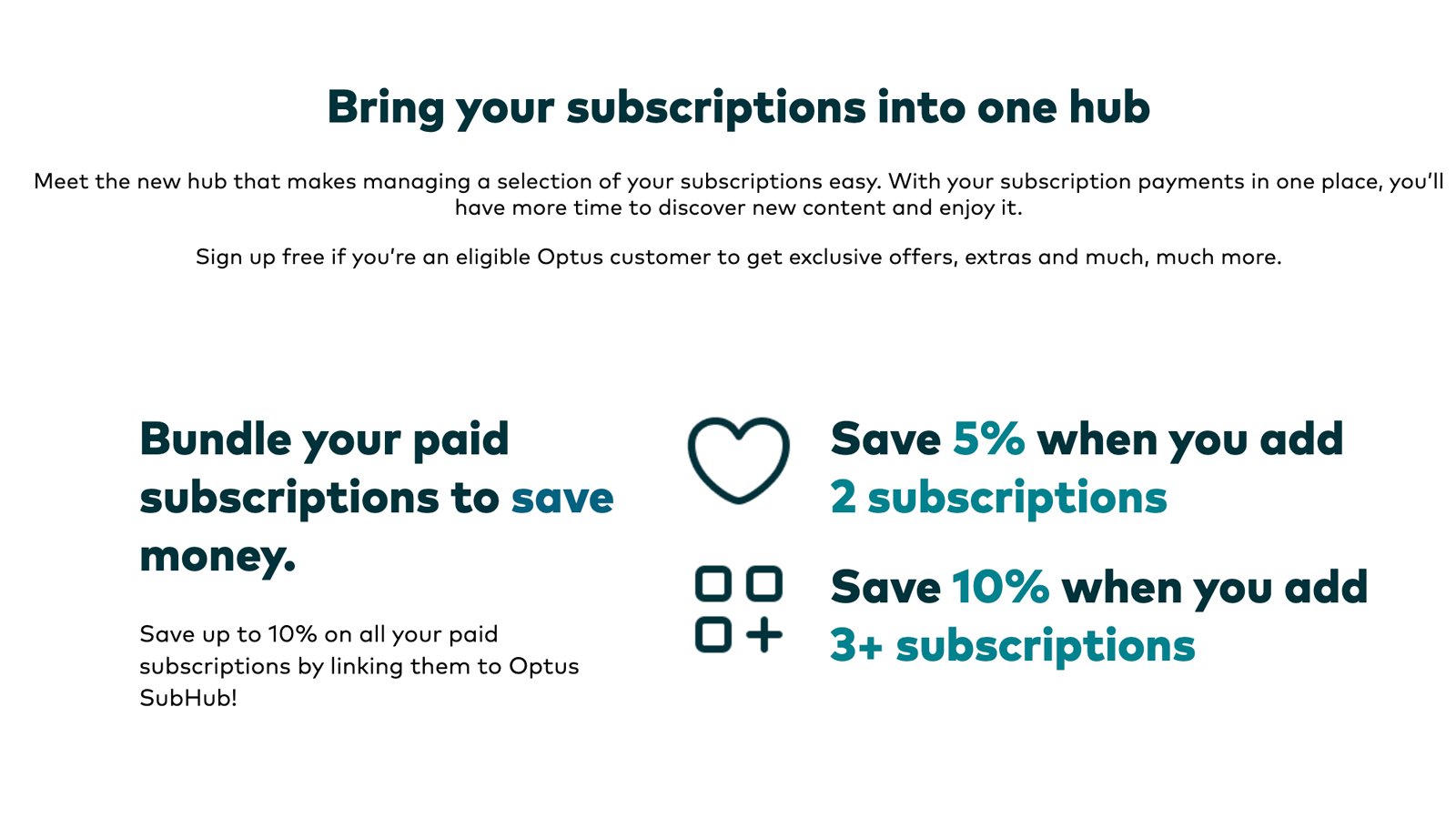Tom's Guide Verdict
Optus appears to be a good option for anyone looking for a reliable and fast NBN connection. Official data from Australia's consumer watchdog shows you are highly likely to achieve advertised speeds and we like the fact you can bundle various subscription services onto your plan to save some money. This feature is only relevant to new customers of each subscription, though. Optus does need to improve when it comes to customer support, however, and we think the cancellation process could do with a bit of a rethink. We're also not fans of how the telco places a compulsory charge on the modem if you leave before 36 months. But, given the apparent reliability of the service, you may find you never need to.
Pros
- +
Reliable service with accurate and fast speeds
- +
Option to bundle subscription services
- +
Well-priced high speed NBN plans
Cons
- -
Customer service could be improved
- -
Compulsory charge for modem if you cancel early
Why you can trust Tom's Guide
Optus is synonymous with internet and mobile services in Australia. Many see it as the second-largest telco in the country behind Telstra. But, according to the Australian Competition and Consumer Commission’s (ACCC) data published in March 2025, it sits third behind TPG with a 12.4% market share. However, TPG refers to the whole group that owns subsidiary companies TPG, Vodafone and iiNet. If you split these up as individuals, Optus is likely to move up into second place.
Regardless, Optus is likely to be one of the first companies you think of when thinking about a new NBN plan.
While Optus’ NBN plans may be more affordable than Telstra's, they’re not the cheapest in the market, and they do come with the caveat of requiring you to pay for the modem unless you stay connected for 36 months. Optus isn’t alone in this tactic, but the majority of other providers require you to remain connected for just 24 months to get the modem for free.
But while Optus may enjoy a high-profile position among Australia’s connected services landscape, is it genuinely one of the best NBN providers around, or should you spend your time seeking out a smaller provider that may offer a better service?
We’ve done some thorough investigating to find out.
Noteworthy Optus deals
- Optus NBN 100 | AU$89p/m (for 6 months, then AU$99p/m)
- Optus NBN 250 | AU$99p/m (for 6 months, then AU$119p/m)
Plans
Optus supports NBN speed tiers from Basic II (25Mbps) through to Ultrafast (1,000Mbps). However, it should be noted that the NBN 25 plan is only available to customers who can supply their own compatible modem, and configure it themselves. Optus will provide its latest Ultra WiFi Modem Gen 2 on all other plans.
As with the majority of NBN providers, Optus doesn’t advertise the maximum download speeds during the typical busy evening hours on its Superfast (250Mbps) and Ultrafast plans, although the download speeds it does advertise are among the fastest available right now.
Get instant access to breaking news, the hottest reviews, great deals and helpful tips.
Optus’ NBN plans, including regular pricing after any introductory discounts, and typical evening speed figures are as follows:
Prices correct at the time of updating.
- NBN 25: AU$75p/m (Typical evening speed 25Mbps)
- NBN 50: AU$89p/m (Typical evening speed 50Mbps)
- NBN 100: AU$99p/m (Typical evening speed 100Mbps)
- NBN 250: AU$119p/m (Typical evening speed 245Mbps)
- NBN 1000: AU$129p/m (Typical evening speed 780Mbps)
Optus’ plans aren’t the most affordable on the market, so if you’re looking for the cheapest NBN plans, we would recommend you look elsewhere. However, if you’re eligible to sign up for an NBN 250 or NBN 1000 plan, then Optus is certainly worth considering. Six other NBN providers advertise faster speeds than Optus on the Ultrafast speed tier.
Only those with fibre-to-the-premises (FTTP) and hybrid fibre coaxial (HFC) can support NBN 250 and NBN 1000 plans.
Speeds
We’ve highlighted the typical evening speed figures advertised on Optus’ NBN plans in the section above, but at the end of the day, they’re just numbers. What do they mean and how do they translate into the real world for you as a customer?
The first thing worthy of mentioning is that not all NBN providers advertise the maximum download speeds theoretically capable on NBN 50 and NBN 100 plans, despite them being two of the most popular in the country. So the fact Optus does advertise them is a good start.
Secondly, as we mentioned earlier Optus doesn’t advertise the maximum download speeds on its NBN 250 or NBN 1000 plans. But currently, no provider promises the maximum 1,000Mbps speeds on the NBN 1000 speed tier.
Optus’ advertised speeds of 245Mbps and 780Mbps, respectively then, are incredibly good. We’ve also been able to determine that if you are connected to Optus NBN, then you should get the speeds advertised, or in some cases, you may find your download speed exceeds what’s quoted.

This revelation has come by way of the ACCC’s recent Measuring Broadband performance report, which found Optus delivered 102.6% of advertised plan speeds during all hours and 101.4% of speeds during the busy hours of 7pm — 11pm.
While this data doesn’t get broken down into individual speed tiers, it does paint an overall picture of the Optus NBN service and suggests that you should experience, at the very least, the speeds you’re paying for. In terms of value for money, this is another gold star against Optus’ name.
Cost
As we also alluded to earlier in this review, Optus isn’t the most affordable NBN provider in the field. Based on plan pricing that we’ve obtained from WhistleOut, Optus’ NBN plans tend to sit around halfway between the cheapest and most expensive NBN plans. Depending on the speed tier and the number of providers that support it, however, Optus’ plans can start creeping towards the more expensive end of the spectrum.
We’ve compared Optus’ regular monthly pricing after introductory discounts against the average monthly price for each speed tier, based on pricing information taken from WhistleOut at the time of writing, to see how it stacks up against the competition.
- NBN 25: AU$75p/m (Average monthly price: AU$70.89)
- NBN 50: AU$89p/m (Average monthly price: AU$84.45)
- NBN 100: AU$99p/m (Average monthly price: AU$92.01)
- NBN 250: AU$119p/m (Average monthly price: AU$105.66)
- NBN 1000: AU$129p/m (Average monthly price: AU$118.38)
As you can see from the pricing data, Optus’ pricing hovers around the average monthly price for all but the NBN 250 and NBN 1000 speed tiers.
While we of course always want to seek out the most affordable NBN plans offering the greatest value, we’re actually pretty satisfied with Optus’ pricing. Being Australia’s second-largest telco, we’re not surprised that pricing is above the monthly average. But when you factor in the ACCC data recording over 100% of advertised plan speeds, on paper at least, Optus at least appears to justify its pricing model.
What we do need to mention in regards to what else you’ll need to pay for an Optus NBN plan is the modem. As with the majority of other NBN providers, Optus will supply you with a compatible modem that is pre-configured to be used with its service. The Ultra WiFi Modem Gen 2 also comes with 4G backup data so, should your fixed-line service go down, the 4G backup data will spring into life to keep you connected until your fixed-line service is restored.
Rather than pay an upfront fee, Optus will let you have it for free, but only on the basis you remain connected for 36 months. If for whatever reason you choose to cancel your service (all Optus plans work on a no lock-in contract model) then you’ll need to pay AU$8.50 for every unused month within that 36 month period.
The maximum you’ll pay for Optus’ modem then is AU$306, which is significantly more than the majority of other providers charge their modems (either upfront or on a payment plan). Telstra, for example, will give you its modem for free if you remain connected for 24 months, but if you choose to leave your service before, you can return it for free, or hold onto it and pay AU$200.
As mentioned, you can bring your own modem to any Optus NBN plan — it’s compulsory for the NBN 25 speed tier — but Optus says you’re responsible for making sure it’s compatible with the service you’re signing up for, and that it can support the speeds.
Reliability
So far it’s been pretty positive for Optus and, where reliability is concerned, it seems as though Optus continues to deliver good news. The ACCC also publishes data relating to daily outages experienced by the 10 providers it monitored during the reporting period.
In the most recent March report, Optus came out on top with just 0.12 average daily outages. Of outages experienced by users who participated in the monitoring process, 21% lasted between 1 — 3 minutes and 59% lasted between 30 — 60 seconds.
Only 10% of outages lasted 10 minutes or more, implying that should your Optus NBN service go down, you should be reconnected pretty quickly and are unlikely to actually notice any interruption.
Note that this data is for fixed-line NBN plans and so doesn’t take into account the 4G backup service provided by Optus’ router.
Data Caps
Optus doesn’t apply any data caps to any of its NBN plans. All come with unlimited data.
Gaming

Optus advertises itself as being a good option for online gamers, even going as far as to say it “loves” gaming. As a result, it previously offered a Game Path add-on that promises to “typically reduce lag by 30%.” On the face of it, Game Path — which customers can add onto their service for AU$10p/m — appeared to work similarly to the network optimisation service Aussie Broadband provides for free.
Game Path was shut down in August 2024, and Optus has yet to announce or confirm any replacement for the service.
Extra Features
When it comes to extra features on an Optus NBN plan (both included and optional extras) you have quite a few options.
The first is whether you want to include a Netflix Standard subscription with your NBN plan or not. Optus offers either option, calling its two plans “Everyday NBN” or “Family Entertainer NBN.”
The latter comes with the aforementioned Netflix Standard subscription, which normally costs AU$16.99p/m. You also get Optus’ Ultra WiFi Booster included for free to help extend the network coverage in your home, along with Optus’ WiFi Secure service which provides added security to help prevent cyberattacks.
These extras are charged at AU$6p/m and AU$5p/m, respectively, bringing the total value of inclusions to AU$27.99p/m. This therefore makes the Family Entertainer plans good value on paper, as they’re only AU$20p/m more than the Everyday plans.

Optus also has what it calls SubHub, which is available for both NBN and mobile customers. SubHub allows you to bundle a number of subscriptions together to receive a monthly discount. You will also have just one lump sum payment to make to cover the cost of all services you subscribe to via SubHub.
Supported subscription services include Netflix, Prime Video, Binge, Optus Sport, Paramount Plus, BritBox and Kindle Unlimited. In most instances, if you’re a new customer to any of the services supported, you’ll be eligible for a free trial from anywhere between seven days to three months.
Finally, Optus has also recently introduced a feature called The Living Network. This, again, is available for both NBN and mobile customers and with it, you can view a live status of your connection. If you have any issues, you can contact support through a live chat feature 24/7.
And of course, being Optus, you have the choice of an optional phone plan to add onto your NBN service. This phone service connects via Voice over Internet Protocol (VoIP) and will — along with the NBN service — likely override any current landline phone service you may have.
Optus’ optional phone plan costs AU$10p/m for unlimited local and national calls, as well as 500 calls to 13/1300 numbers. If you want to make international calls, you’ll need to pay an additional AU$15p/m for the international call pack.
By comparison, Telstra includes unlimited calls to Australian landlines and mobiles for free with its NBN plans, as well as 30 minutes of international calls.
Cancellation and hidden costs
Cancellation and hidden costs is where things get interesting for Optus. We’ve already touched upon some of the hidden costs you can expect to incur if and when you cancel your Optus NBN plan, but we’ll go into more detail here.
As is the case with most NBN providers, Optus works on a no lock-in contract model. This means you’re free to cancel your plan whenever you want, as opposed to being tied into a 6, 12 or 18 month contract. There are no cancellation fees to pay if you decide to cancel.
However, Optus does state that no pro-rata refunds will be given if you decide to cancel during your current billing cycle, i.e. if your billing date is the first of the month and you cancel on day 10, you won’t receive a refund for the remainder of that month.
You will also be required to pay any outstanding fees for any Optus devices you have, including the modem and the Ultra WiFi Booster if you cancel your service within an initial 36 month period. Optus does say you’re able to pay for the Ultra WiFi Booster upfront, which costs AU$216.
Some may see this three year period as being a contract of sorts, because you’re ultimately still liable to pay some fees, even if they’re not directly associated with your NBN service.
You’ll be required to pay AU$8.50 for each unused month within the initial 36 month period for the modem, meaning the maximum you’ll pay is AU$306. If you remain connected for 36 months, or you bring your own modem, you won’t need to pay anything.
As we mentioned earlier, Telstra operates on a similar model, although it only requires you to be connected for 24 months and gives you the option of returning the modem to avoid paying any fees. We would have liked to have seen Optus offering either or both of these options.
Optus also lays out charges associated with upgrading or downgrading an NBN plan. If you’re currently connected via fibre-to-the-node (FTTN) or fibre-to-the-curb (FTTC) and you become eligible for an NBN upgrade to fibre-to-the-premises (FTTP), then Optus says you’ll be able to request this upgrade without having to pay any installation costs. However, the terms and conditions state that you will need to then remain connected to this plan for at least 12 months.
If you cancel your new plan, or reduce the speed of your service during the 12 month period, then you “may be charged a cancellation/downgrade fee.”
Finally, if you need help with installing any of your NBN or phone services, then Optus charges a one-off AU$240 fee. Now, we know not everyone is tech-savvy, but this installation fee only covers plugging in the modem, connecting devices to it and “assurance that your nbn is working,” among a few other inclusions. AU$240 for this seems a bit steep.
Reputation
Despite Optus performing well in official ACCC reports, it appears that doesn’t translate to positive customer experiences. Using both ProductReview.com.au and TrustPilot.com as sources, it appears to be predominantly one star reviews across the board.
The main concern that appears to arise lies with Optus’ customer support team. The majority of disgruntled customers claim they get moved from representative to representative over the course of several hours, adding that whoever they manage to speak to doesn’t fully listen or do their best to resolve the complaint.
Customers also say they continue to receive invoices for services they’ve either cancelled or changed, such as being asked for payment for modems they’ve returned under the proviso they won’t be charged or will receive a refund.
There is also of course the huge elephant in the room of the data breach Optus experienced in 2022 and subsequent outage in November 2023. This understandably left a lot of current customers feeling negative about the telco and could cause some hesitation among potential customers wanting to sign up.
Wanting to remain impartial despite the swathes of negative feedback, we could speculate that because of the data breach, some customers are now wanting to find fault wherever they can. We’ve also taken this stance partly on the basis that, of the reviews we’ve seen, not many reference the actual NBN service but instead focus on customer support and payments.
If you look back at reviews that were posted before the data breach occurred, there are several five stars included in the mix. Customers around Australia, including Queensland, WA and even regional NSW all claim their NBN connection is reliable, fast, and the whole sign-up, connection and activation process was seamless.
This writer has been an Optus mobile customer for the best part of five years and has rarely had any trouble with the service or with speaking to customer support. Admittedly, having the representative understand exactly what’s being asked hasn’t always been plain sailing, but any issues have been resolved and continued to be a satisfied customer.
Tom's Guide reached out to Optus for comment on the recent negative reviews, to ask them firstly if they were aware and if they were looking at ways to turn things around. An Optus spokesperson told Tom's Guide:
"There are numerous forums available for customers to share their experiences and opinions, consequently the feedback from these sites can vary in nature."
"At Optus we take seriously and are passionate about providing exceptional service. We have a dedicated program of work that is always deep diving into customer experience to understand how we can continue to improve. Our insights indicate Optus’ assisted support for NBN has been improving."
"We remain committed to delivering a high-quality Optus NBN service and encourage customers to reach out to us directly so that we can address their concerns and provide a resolution."

Max is a digital content writer for Tom’s Guide in Australia, where he covers all things internet-related, including NBN and the emerging alternatives, along with audio and visual products such as headphones and TVs. Max started his career in his homeland of England, where he spent time working for What Hi-Fi? and Pocket-lint, before moving to Australia in 2018.
- Lucy ScottingStaff Writer
You must confirm your public display name before commenting
Please logout and then login again, you will then be prompted to enter your display name.

